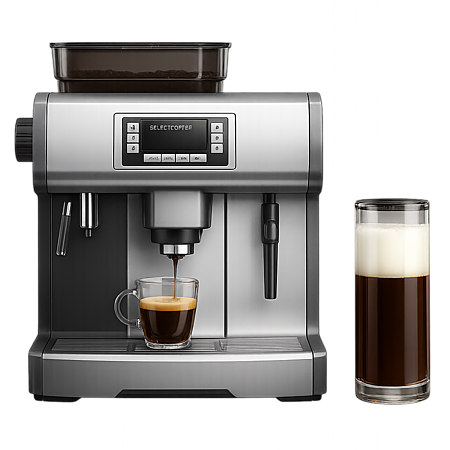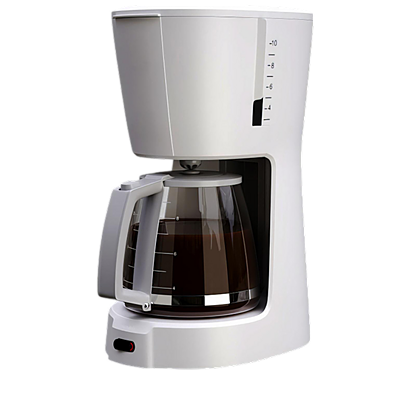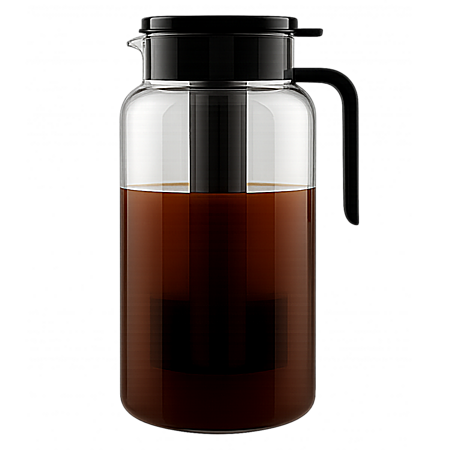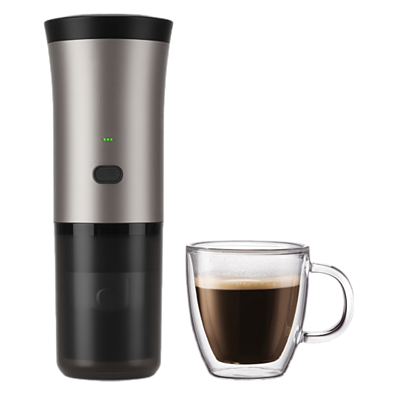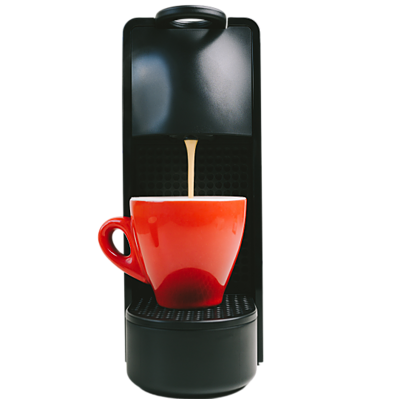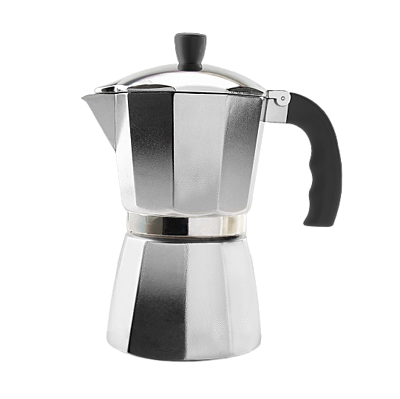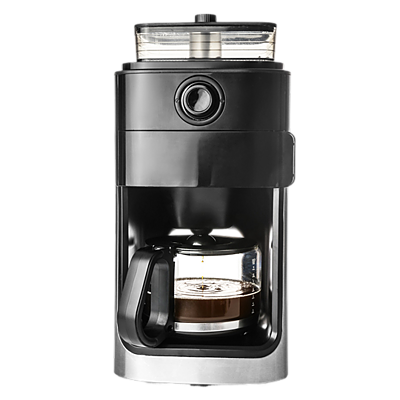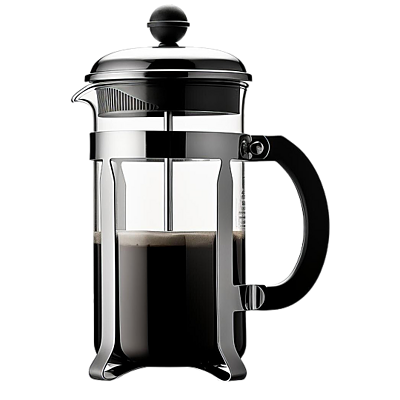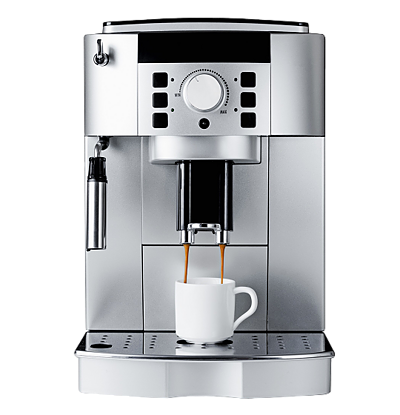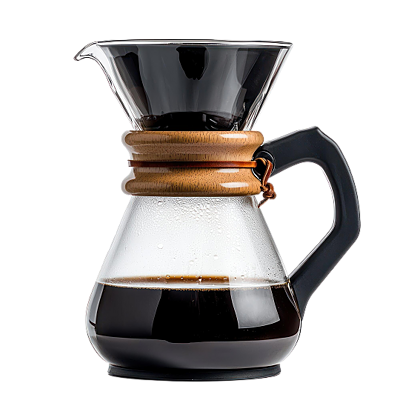Single serve coffee makers are no longer just for dorm rooms or office breakrooms. In fact, they’re perfect for anyone who wants a quick, consistent, and mess-free cup of coffee. In just seconds, these little countertop gems can brew you a piping hot cup of joe just how you like it, and at the time you need it, all with the press of a button.
I’m going to help you select the best single serve coffee maker that suits your lifestyle, taste, and kitchen. And, if you’re interested in reading more about coffee machines in general and reviewing the different brands on the market, see my main buyer’s guide.
How to Buy a Single Serve Coffee Maker: Key Features to Consider
Pod Compatibility & Type
Pod compatibility is one of the most important factors when choosing a single-serve coffee maker. Most machines are designed to work with a specific pod system—like Keurig’s K-Cups, Nespresso’s OriginalLine or Vertuo pods, or proprietary formats from brands like Lavazza. Make sure the machine you’re considering supports the pod type you prefer, as pods are not interchangeable across systems.
Each pod type offers different strengths. K-Cups are widely available and offer a broad range of coffee, tea, and even hot chocolate options from various brands. Nespresso OriginalLine pods focus on espresso and espresso-based drinks, while Vertuo pods offer both espresso and larger cup sizes, but are only compatible with Vertuo machines.
Also consider whether the machine allows for third-party or reusable pods. Some models give you the flexibility to use your own ground coffee, which can reduce waste and ongoing costs. Before buying, think about the cost and availability of pods, flavor variety, and whether the pod system aligns with how you like to drink your coffee—whether it’s bold espresso or a full cup of mild roast.
Reservoir Size & Refill Frequency
The size of the water reservoir directly impacts how often you need to refill during your coffee routine. Larger reservoirs—typically between 40 to 80 ounces—are ideal if you drink multiple cups throughout the day or have guests, as they reduce interruptions and save time. Smaller reservoirs, around 20 ounces or less, require more frequent refills but keep the machine compact and better suited for limited counter space or occasional use.
Consider how many cups you usually brew in a session. If you’re making just one or two cups a day, a smaller reservoir might be enough. For households with several coffee drinkers or offices, a larger tank is more convenient. Some models have removable reservoirs, making refills and cleaning easier.
Brew Strength & Temperature Control
Brew strength and temperature control significantly influence the taste and quality of your single-serve coffee. Brew strength settings let you adjust how concentrated or mild your coffee will be.
Machines achieve this by changing the water volume or brewing time—using less water for a stronger cup or more for a lighter one. Some models offer multiple strength levels (light, medium, strong), while others provide custom settings to fine-tune your brew. This flexibility is useful if you like different strengths depending on the time of day or coffee type.
Temperature control ensures water heats to the ideal range—typically between 195°F and 205°F—for optimal extraction. Too low, and the coffee may taste weak or sour; too high, and it can become bitter or burnt. Advanced machines use precise heating elements to maintain stable temperatures throughout brewing, resulting in more consistent flavor. Some high-end models even allow you to manually adjust the temperature to suit specific coffee beans or roast levels.
If you want full control over your cup, prioritize machines with adjustable strength and temperature features. For everyday convenience, models with preset but consistent brewing temperatures still deliver quality coffee but with less hands-on customization.
Cup Size Options
Cup size flexibility is an important feature to consider when choosing a single-serve coffee maker. Different machines offer a range of preset cup sizes, typically from 6 ounces up to 12 or even 14 ounces, allowing you to brew everything from a small espresso-style shot to a larger mug of coffee.
Some models provide multiple button options or customizable pour volumes, giving you control over how much coffee you want per brew. This is helpful if your preferred cup size varies—such as a small morning espresso and a larger afternoon coffee—or if you want to fill different mugs and travel cups.
If you frequently switch between drink sizes, look for a machine that allows easy adjustment of brew volume without needing to stop the cycle mid-pour. Also, consider the maximum cup height the machine can accommodate to ensure it fits your favorite mugs or travel tumblers.
Build Quality & Footprint
Build quality and footprint affect both the longevity of your coffee maker and how well it fits into your space. A well-built machine should feel solid and stable, with tight-fitting components, smooth button action, and minimal rattling during operation. Look for machines with durable housing (often ABS plastic or stainless steel), clear water level indicators, and reliable lid or pod mechanisms that don’t feel flimsy.
Footprint refers to the machine’s size and how much counter space it occupies. Compact models are ideal for small kitchens, dorm rooms, or offices, but they may come with trade-offs like smaller reservoirs or limited features. Larger machines often offer more cup size options, a bigger water tank, and additional settings—but make sure you have room under your cabinets, especially if the water reservoir or pod compartment opens upward.
Before buying, measure your available counter space and consider how often you’ll move the machine. If you need something portable or space-saving, prioritize compact dimensions without sacrificing essential features.
Cleanup & Maintenance
Easy upkeep keeps a single‑serve machine tasting great and lasting longer. Prioritize models with fully removable parts—drip tray, used‑pod bin, and water reservoir—so you can rinse everything quickly under the tap or load it into the dishwasher.
A slide‑out drip tray catches splashes and pod drips; look for deep trays with smooth surfaces to prevent buildup. Machines that pierce pods should have an accessible needle or brew head you can wipe with a damp cloth to avoid clogs.
Regular descaling is essential because mineral deposits dull flavor and strain the pump. Choose a unit that provides automatic descaling reminders or a simple “clean” button sequence; some brands include a starter descaling solution. If your water is hard, pick a model with a replaceable in‑tank filter to stretch time between descaling cycles.
Check pod‑waste handling too. Brewers with a built‑in eject mechanism drop used pods into an internal bin, reducing mess—just empty and rinse daily. Finally, confirm that replacement gaskets, filters, and cleaning kits are easy to find online.
Noise Level & Brew Speed
A quiet, fast brewer keeps mornings smooth, especially in shared spaces. Pump‑driven machines with insulated casings typically stay below 60 dB—about normal conversation—while entry‑level units can spike above 70 dB when pressurizing water or ejecting pods. If you make coffee before others wake, check manufacturer specs for decibel ratings or look for reviews mentioning “quiet mode” or vibration‑dampening feet.
Brew speed influences convenience. Most single‑serve machines heat water on demand and finish a 6–8 oz cup in 40–60 seconds; models with internal tanks shave that to around 30 seconds but draw standby power to keep water hot. Units that heat per cup are more energy‑efficient yet add 20–30 seconds of warm‑up.
Match performance to routine:
- Early risers or office users—prioritize sub‑60 dB models with rapid heating so you don’t disturb coworkers or family.
- Energy savers—choose machines that fully power down but still brew under two minutes from cold start.
- Multiple back‑to‑back cups—look for larger internal boilers that maintain temperature between pours to avoid wait times.
Single Serve Coffee Maker Types: Choose by Skill and Style
Choosing the right system depends on how much convenience and control you want.
Pod-Based Systems
Best for: Quick, consistent brews with little cleanup
Pros: Massive variety of pods, very easy to use
Cons: Expensive in the long run, environmental issues
These are the most common single serve machines. Good for multi-person households or offices where speed is a big factor.
Reusable Filter Basket Systems
Best for: Eco-friendly coffee drinkers and customization fans
Pros: You can use your own ground coffee. Can be more cost-effective over time
Cons: More cleanup. You’ll need a way to measure out your grounds
Basically, you get the pod-like convenience of a Keurig with the flexibility of a drip coffee maker when it comes to coffee types and grind size.
Espresso-Style Capsule Machines
Best for: Espresso fans with limited counter space
Pros: Strong, concentrated coffee; compact, sophisticated design
Cons: Makes less coffee at a time. Can only use capsules
Think of this like espresso you can make whenever you want. The taste is robust with a nice crema, but you can’t customize it the way you can with a traditional espresso machine.
Dual Function Machines
Best for: Homes with more than one coffee drinker
Pros: Make both single cups and full carafes of coffee
Cons: More countertop space needed
These machines give you both a one-cup brewer and a traditional coffee maker in one.
Travel-Friendly Brewers
Best for: Small spaces and people who travel often
Pros: Compact, lightweight, some don’t require pods
Cons: Fewer features
These are great for dorm rooms, RVs, or anyone who needs coffee on the go. Throw in your grounds or pods, then plug in and go.
Advanced Features Worth Considering
- Brew size selector: From 4 oz cup to 16 oz travel mug.
- Iced coffee function: Brews right over ice, without watering down flavor.
- Auto-off feature: Saves energy and offers peace of mind.
- Touchscreen displays: Sleek, intuitive controls.
- Built-in milk frother: Makes lattes and cappuccinos easy.
- App or smart connectivity: Start brewing from bed!
- Adjustable drip tray: Fits short cups or tall thermoses.
- Descaling alerts: Reminds you to keep the machine clean and brewing efficiently.
Budget Breakdown: What to Expect
Here’s a quick breakdown of what to expect at various price points:
- $0–$50: Basic single serve brewers. These are good options for students or if you only plan on using it every once in a while. They typically have fewer features and smaller tanks.
- $50–$125: This is the sweet spot. Price range includes name brands and higher end features, like brew strength settings and better build quality.
- $125–$200: This range is when you start to see machines with more advanced or premium features, such as iced coffee mode, touchscreens, and stronger brews.
- $200+: Luxury or high-end machines will offer app connectivity, milk frothers, or dual-brew systems.
Which Machine Matches Your Routine?
If you need a coffee maker that can accommodate different moods and schedules, consider how you like to brew your single serve coffee:
- Always in a rush? Choose a fast, single-button pod system with auto shut-off.
- Weekend sipper? Try a machine with strength control and reusable filter options.
- Need versatility? Go for a dual brew system to make cups or carafes.
- Tiny kitchen? Pick a slim machine like the Keurig K-Mini or Nespresso Essenza.
- Espresso fan? Choose a capsule-based system with crema-rich output.
- Eco-minded? Get a machine with a reusable filter and compostable pods.
- One-cup minimalist? Pick a manual travel brewer like the Aeropress Go.
Is a Single Serve Coffee Maker Right for You?
If you’re all about speed, convenience, and consistency of a cup, a single serve coffee maker is for you. Solo sippers, busy parents, and small households that hate wasting coffee will love it. Precision coffee drinkers, you might prefer pour over. But for fast, consistent, tasty coffee, a single serve machine is the way to go.


